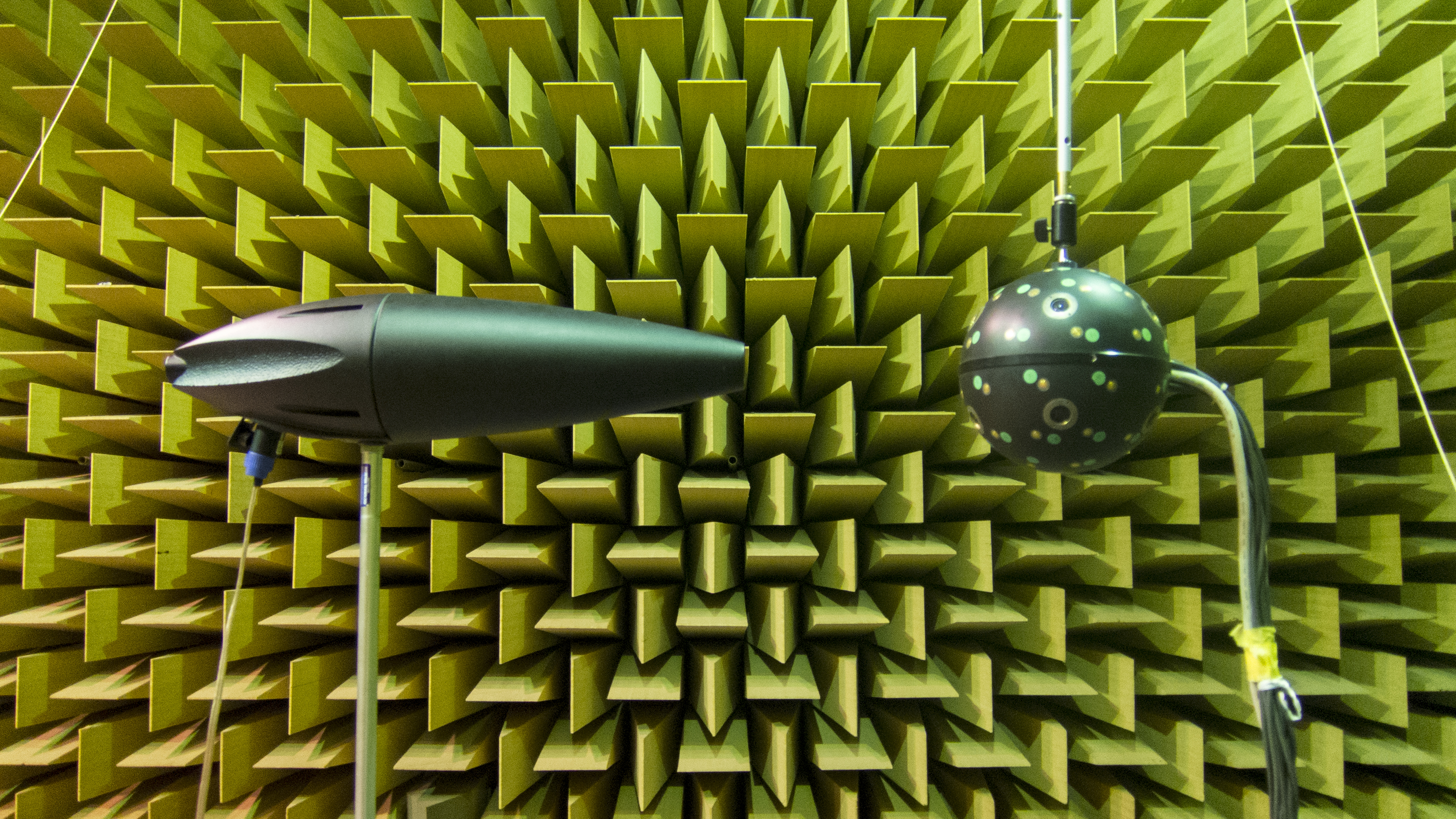Acoustic Technology
Acoustic Technology conducts research into sound and vibration. Our research is focused on the generation and transmission of sound, passive and active noise control, transducer technology, advanced acoustic measurement techniques, room acoustic modelling and design, and effects of new building materials on sound transmission.

The ultimate objective of our research is to develop improved technological solutions for communication within room acoustics, loudspeakers and hearing aids and noise control within transportation noise, vibration control, noise in buildings and the propagation of outdoor noise. Our PhD students carry out a substantial part of our research.
Working in
close collaboration with Acoustic Technology, the newly established Centre for
Acoustic-Mechanical Micro Systems (CAMM) focuses on precompetitive research
within mechanics, acoustics and acoustic-mechanical interaction for objects at
the micro-scale. Advanced dynamics and optimization being an important part of
the future research. The CAMM centre is partially funded by the three large
hearing aid companies; GN Resound, Widex and Oticon and staff members come from
both DTU Department of Electrical Engineering and DTU Department of Mechanical
Engineering.
Research fields
- Sound Field
Analysis and Measurements
Sound and Vibration is concerned with fundamental aoucstic wave phenomena, including generation, transmission, relection, diffraction, scattering and absorption of sound wave propagation in structures and fluid-structure interaction.
- Electroacoustics
and Transducer Technology
Electro acoustics deals with recording and reproduction of sound. The quality of the reproduced sound depends highly on the properties of the microphones and loudspeaker in the signal chain, due to the influence of their frequency response, directivity and nonlinear effects. - Structure-borne
Sound
Vibration of mechanical systems and waves in solid structures in the audible frequency rang are subjects which form an integral part of engineering acoustics. The study of the phenomena of such vibrations and waves are called structure-borne sound, structural acoustics or vibro-acoustics; the three terms can be considered equivalent and interchangeable. Thus, vibro-acoustic is the study of the mechanical waves in structures and how they interact with and radiate into adjacent media - Architectural
Acoustics
The tendency in building technology is toward lightweight materials. This presents a challenge for acousticians both because lightweight building structures are prone to have poor sound insulation compared with conventional heavy constructions, and because of the fact that the established, standardised models for predicting transmission of sound in buildings are unreliable for lightweight buildings.
We work in
close collaboration with Danish and foreign universities as well as with Danish
and foreign companies.
Contact
Finn T. Agerkvist Head of Group, Associate professor ftag@dtu.dk